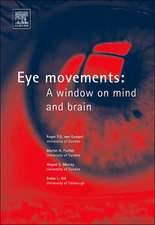Electrodermal Activity
Autor Wolfram Boucseinen Limba Engleză Hardback – 23 sep 2011
| Toate formatele și edițiile | Preț | Express |
|---|---|---|
| Paperback (1) | 1617.62 lei 6-8 săpt. | |
| Springer Us – 3 mar 2014 | 1617.62 lei 6-8 săpt. | |
| Hardback (1) | 1625.12 lei 6-8 săpt. | |
| Springer Us – 23 sep 2011 | 1625.12 lei 6-8 săpt. |
Preț: 1625.12 lei
Preț vechi: 1710.65 lei
-5% Nou
Puncte Express: 2438
Preț estimativ în valută:
310.95€ • 324.70$ • 256.78£
310.95€ • 324.70$ • 256.78£
Carte tipărită la comandă
Livrare economică 15-29 aprilie
Preluare comenzi: 021 569.72.76
Specificații
ISBN-13: 9781461411253
ISBN-10: 1461411254
Pagini: 638
Ilustrații: XVIII, 618 p.
Dimensiuni: 155 x 235 x 38 mm
Greutate: 1.07 kg
Ediția:2nd ed. 2012
Editura: Springer Us
Colecția Springer
Locul publicării:New York, NY, United States
ISBN-10: 1461411254
Pagini: 638
Ilustrații: XVIII, 618 p.
Dimensiuni: 155 x 235 x 38 mm
Greutate: 1.07 kg
Ediția:2nd ed. 2012
Editura: Springer Us
Colecția Springer
Locul publicării:New York, NY, United States
Public țintă
ResearchNotă biografică
Wolfram Boucsein is professor of physiological psychology at the University of Wuppertal, Germany. He received his training both in psychology and physiology and obtained his Ph. D. in psychology at the University of Giessen, Germany in 1971. Afterwards, he held various positions as research assistant, senior lecturer and associate professor, before he was appointed as full professor at the Wuppertal University in 1982. He has co-edited several books and published more then 150 papers in psychophysiology, clinical psychology, applied psychology and in fields overlapping with medicine. His current research interests are in using central and autonomic nervous system recordings in the study of emotions and information processing, in the modeling of neurophysiological systems for arousal and emotion, and in applying psychophysiological methods to adaptive automation and product testing.
Textul de pe ultima copertă
Electrodermal Activity, Second Edition
Wolfram Boucsein
From EEG technology to the polygraph, psychophysiology has become part of mainstream science, encompassing a number of subspecialties. In particular, the study of electrodermal activity (EDA)—the activation of sweat glands in the skin in response to stress or other stimuli—has given psychologists many useful applications over a variety of settings. Increased scholarly interest in EDA has brought with it a wealth of improvements in recording, analyzing, and applying data—and a need to make this knowledge available in a readable, practice-oriented format.
The Second Edition of Electrodermal Activity brings together research from biology, psychology, and physics for a comprehensive understanding of the subject and its potential across mental health and medical disciplines. As in the original volume, the reader is given a thorough grounding in electrodermal phenomena: the anatomy and physiology of the electrodermal system, the biophysics of measurement, and the history of the field. From there, the book incorporates two decades’ worth of new knowledge, not just on innovative measurement and analytic techniques but also in the area of applications, with new or completely rewritten chapters on the use of EDA in:
Wolfram Boucsein
From EEG technology to the polygraph, psychophysiology has become part of mainstream science, encompassing a number of subspecialties. In particular, the study of electrodermal activity (EDA)—the activation of sweat glands in the skin in response to stress or other stimuli—has given psychologists many useful applications over a variety of settings. Increased scholarly interest in EDA has brought with it a wealth of improvements in recording, analyzing, and applying data—and a need to make this knowledge available in a readable, practice-oriented format.
The Second Edition of Electrodermal Activity brings together research from biology, psychology, and physics for a comprehensive understanding of the subject and its potential across mental health and medical disciplines. As in the original volume, the reader is given a thorough grounding in electrodermal phenomena: the anatomy and physiology of the electrodermal system, the biophysics of measurement, and the history of the field. From there, the book incorporates two decades’ worth of new knowledge, not just on innovative measurement and analytic techniques but also in the area of applications, with new or completely rewritten chapters on the use of EDA in:
- Decision-making.
- Human-computer interaction.
- Neurological diseases and brain lesions.
- Anxiety, depression, psychopathy, and schizophrenia.
- Detection of deception.
- Biofeedback, product evaluation, and more.
Caracteristici
Presents new models and new empirical findings Provides the latest recording and scoring techniques Discusses the use of brain imaging techniques Reviews new applications in clinical psychology and biofeedback









